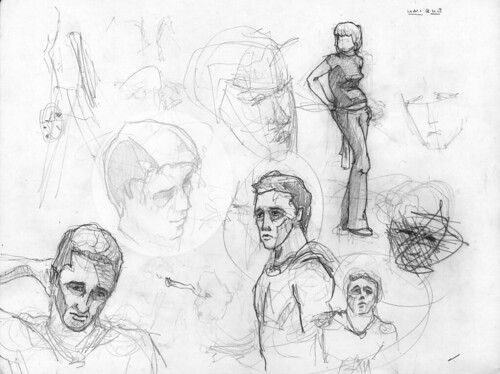 |
| photo by Trevor Patt of Flickr |
Guest post by Carolyn Schriber
I am currently working on a new writing project. I hesitate to call it a historical novel yet, since not much of it actually exists. But I have a fascinating cast of characters as ingredients in the brew that will eventually become a novel. In 1861, a group of Abolitionists from Boston , New York , and Philadelphia set sail for coastal South Carolina
The Abolitionists were a motley group. One of their fellow passengers aboard the ship that carried them described them thus: "bearded and mustached and odd-looking men, with odder looking women." Another suggested that they were "broken-down schoolmasters or ministers who have excellent dispositions but not much talent." Such quirks mean that they are going to be fun to work with. But my first problem is getting to know them as individuals, so that my readers can tell them apart.
This is where I find that compiling a character sketch of each person is an indispensable first step. To my delight, I have just discovered that the new version of "Scrivener," released just in time for National Novel Writing Month, provides a template for such sketches. (If you are not familiar with Scrivener, the best writing software available, you owe it to yourself to check it out at http://www.literatureandlatte.com/scrivener.php ). The template offers the following sections: role in story, occupation, physical description, personality, habits and mannerisms, background, internal conflicts, external conflicts and notes. Here are some of the resources I use to compile this information for my works of historical fiction.
1. Since most of my characters are real people, I start with a general history text that describes the events I want to write about. Plundering the index is a quick way to locate and identify such details as occupation and background.
2. My second resource is usually the U. S. Census. Any good genealogy program can quickly located any mention of the character in whom you are interested. I've been concentrating on such things as the family's economic status and my individual's place within the family. Among the women I am looking at, I found one who was the only girl in a huge family of boys -- thus explaining, perhaps, why so many people comment on her masculine habits and interests. Another was a nine-year-old-child when her mother died, leaving her to help raise four younger brothers and sisters. No need to wonder where she developed her nurturing nature.
3. Photographs can reveal much. One of my ladies is a spinster, uniformly adored by the children she teaches but an object of scorn by many of the men around her. Why? Well, a single glance at her only formal portrait draws attention her unfortunately huge bulbous nose.
4. The character's own writings -- letters, diaries, journals, other publications -- complete the picture. One of my characters is a preacher's wife. I knew she was a singer and a teacher, as well as the leading force among the evangelical abolitionists. I didn't fully understand her, however, until I discovered a book she had written about the evils of slavery. It shows her not only as an intemperate zealot, but as a lascivious one at that. I might have missed that part of her character if I had not taken the time to compile a character sketch.
The template works equally well for fantasy, purely fictional characters, historical figures, and even the people involved in historical monographs. You must know your character very well before you can expect your reader to understand and identify with him.
Carolyn Schriber now writes Civil War novels. Her latest release, Beyond All Price, is available from her Amazon Author's Page or from Katzenhaus Books. You can also find her on Facebook, Twitter, and LinkedIn. E-mail her at schribercat4@yahoo.com.


